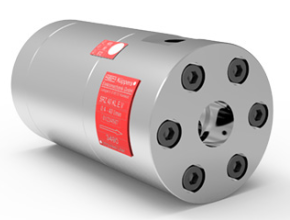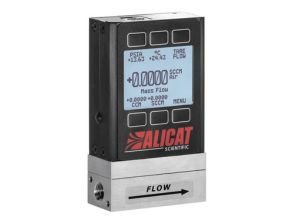Litre Meter LMag-i2 Electromagnetic Insertion Flow Sensor is designed for use with conductive fluids in 4”–12” pipe. The LMag-i2’s stainless steel body allows the meter to operate in a wide range of temperatures, pressure, and corrosive or dirty environments.
Features
- No moving part
- Economical
- Durable
- Easy to install
- Easy to maintain
- Pulse output standard
- ±2% accuracy
Litre Meter LMag-i2 Typical Applications
- Water/wastewater treatment
- Reuse/reclaim water
- Industrial processes
- Cooling towers
- Pump towers
- Dewatering
Ideal for ‘difficult’ applications
The LMag-i2 is ideal for difficult applications. With no moving parts, these meters can be used in “dirty water” applications where debris would foul a mechanical meter. If the LMag-i2 meter is used with a programmable controller, the output signal can be fed direct, with no other conditioning required.
Rate and total units can be set via the front panel touch keypad by the user. Bidirectional flow is standard with totals available in forward, reverse, net, batch forward and batch reverse.
Easy installation
The LMag-i2 is battery powered and an output cable is available for transmitting the pulse signal to remote devices. The LMag-i2 includes a saddle that has been designed to accommodate a wide range of pipe sizes and types while ensuring correct placement in the pipe. In addition, an optional internal data logger allows local storage of flow history.
Litre Meter LMag-i2 Specifications
| Pipe sizes: | 4” to 12” | |
| Pressure: | 14 bar | |
| Temperatures: | Operating | -12º to 60º C |
| Storage | -40º to 70º C | |
| Fluid temp: | 0º to 93º C | |
| Flow rate: | 0.5 to 4.5 m/s (low flow cutoff 0.15 m/s) | |
| Calibration accuracy: | 0.5 – 4.5 m/s | ± 2% of reading |
| 0.3 – 0.5 m/s | ± 2% of reading (+0.25% of full scale) | |
| Materials: | Sensor body | 316 SS |
| Electrodes | Hastelloy | |
| Housing | Powder-coated diecast aluminum | |
| Electrode cap | PVDF | |
| O-Ring | EPDM | |
| Power | One lithium 7.2V ‘D’ sized battery pack, replaceable | |
| Scaled pulse output: | Signal | Current sinking pulse, isolated, 36 Vdc at 10mA max |
| Pulse rates | User-scalable from 0.1 to 99,999.9 volume units/pulse. Pulse width varies with output frequency, 150 pulses/sec max high speed digital (remote and direct only) | |
| Optional output cable | 6m standard length, polyurethane jacketed cable for power and outputs. Lengths up to 60m possible | |
| Conductivity: | >20 microSiemens/cm | |
| Empty pipe detection: | Hardware/software, conductivity-based | |
| Regulatory | CE (EN 61326) Pending | |
| Environmental | IP67 | |
What are Electromagnetic Flow Meters?
Electromagnetic flow meters, also called mag meters or magnetic meters, are volumetric flow meters that do not have any moving parts to wear, reducing the need for maintenance or replacement. Accuracy over a wide flow range can be as good as ± 0.5% of the flow rate or better.
They feature an obstruction-free design that eliminates flow impediment and operate with electrodes embedded on opposite sides of the flow tube or sensor to pick up the signal. Mag meters perform extremely well in many municipal and processing applications and have become the meter of choice for measuring conductive liquids such as water or slurry.
How Does a Mag Flow Meter Work?
All mag meters operate under the principle of Faraday’s Law of Electromagnetic Induction to measure liquid velocity. The principle of operation states that a conductor moving through a magnetic field produces an electric signal within the conductor, which is directly proportional to the velocity of the water moving through the field. In essence, as fluid flows through the magnetic field, conductive particles in the fluid create changes in voltage across the magnetic field. This variation is used to measure and calculate the velocity of water flow through the pipe.
Advantages of using Electromagnetic Flow Meters
The main advantages of using magmeters are that they require less maintenance, and can be ordered for very large line sizes. Some, such as McCrometer’s FPI Mag, for example, can be installed with a simple hot tap which does not require shutting down the line. Mag meters also have the benefit of adding a level of trust for consumers: they hold the service provider accountable for the actual water being produced and/or billed. These efforts will assist with the preservation of our water resources while improving profitability for the utility.
Disadvantages of using Magnetic Flow Meters
It depends on the meter itself. Some flow tube meters have a liner that can separate from the meter causing system damage and requiring maintenance. Look for a meter that does not require a liner, such as McCrometer’s Ultra Mag flanged magnetic meter with an NSF-approved, fusion-bonded epoxy liner: the UltraLiner. Mag meters don’t work on nonconductive fluids such as oils, steam, or gas.
Download Datasheet: Litre Metre LMag-i2 Litre
Reference: litremeter.com
Another Article:
- Seametrics EX800 Fixed Depth Insertion Magmeter
- Onicon F3500 Series Insertion Electromagnetic Flow Meter
- PE 202 Seametrics Low-Flow Magmeter
- Alia AMF301 electromagnetic water flow meter
- Yokogawa ADMAG Magnetic Flowmeters





